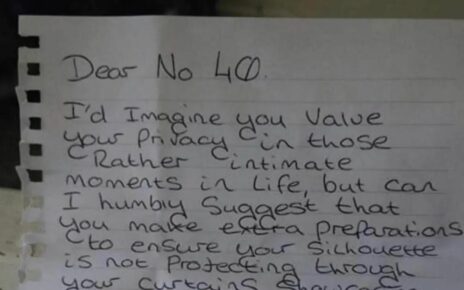DAMP walls create the perfect conditions for mould and mildew, which can destroy your furniture and your health.
Here are the best tips for getting rid of mould in your home.
How to get rid of mould
Mould is a type of fungi that live on animal or plant matter, including building materials like wood and plasterboard, and furnishings like curtains, carpets and boxes.
It plays a major role in the ecosystem of the earth – but it can be dangerous inside the home.
Typically mould is caused by humidity, condensation or poor ventilation.
Rising damp is also a reason your walls and ceilings could be mouldy.

Rising damp could indicate a serious problem with the internal walls as a pipe behind the walls or under your bath may have burst.
There are many ways to treat mould in your home, but whichever method you use, you should always protect yourself from mould by wearing rubber gloves and a mask that covers your mouth and nose.
Read more in Cleaning Hacks

I’m a cleaning expert — 3 places you’re neglecting, making your home stink

My daughter was left fighting for her life after 2 years in MOULD-RIDDLED house
Keep the area well ventilated with windows and doors open to prevent it spreading to other areas in your home.
Hydrogen Peroxide
Pour three per cent strength hydrogen peroxide into a bottle and spray it on the affected area.
Let it sit for 10 minutes, or until it stops bubbling.
Using a cloth or soft brush, scrub the mould away.
Wipe the surface dry with a clean cloth.
Repeat if necessary.
White Vinegar
Spray some vinegar on the surface and leave it for at least an hour.
Scrub with a brush then wipe with a damp cloth.
Leave to dry.
Remember to never mix vinegar with bleach as it creates a toxic gas which can be deadly if inhaled.
Baking soda
Dissolve baking soda in water, and spray it on the mould.
Apply the mixture and scrub with a brush.
Wipe away the excess with a clean, damp cloth then leave it to dry.
MORE ON FABULOUs

My pathetic neighbours have a system to ensure that 'their' space is always saved

I'm a size 16 & have found three perfect dresses in Zara

You’ve been using ice cube trays wrong, the right way means you’ll never run out

Fashion fans in uproar as Primark brings back cult Noughties trend
Is mould dangerous?
Living with mould in your home can affect your physical and mental health.
According to research by Envirodent, damp caused by condensation is on the rise, affecting 1 in 5 homes in the UK.
Mould can be harmful for vulnerable groups including the elderly, infants and children and those with pre-existing health conditions.
Read More on The Sun

I was swallowed by a WHALE – I could feel the animal’s muscles squeezing me

You’re using your fan WRONG – dangerous mistakes to be aware of amid heatwave
Mould impacts your immune system and can cause respiratory problems.
The spores produce allergens that can cause sneezing, a runny nose, skin rashes and even asthma attacks.
Cleaning hacks and tips

Here are some tips to help you clean your home like a pro:
- How to clean your washing machine in a few easy steps
- Keep on top of cleaning your oven regularly
- Clean your shower to ensure it's always sparkling
- How to clean your microwave using cheap household items
- Here's how to get rid of that nasty limescale in your kettle
- You're cleaning your carpet all wrong – here's how to get it spotless again in no time
- Unblock a toilet without a plunger
- These are five hacks to ensure your kitchen is spotless
- If you haven't cleaned your mattress in ages, here's how
- Steps to cleaning your dishwasher to leave it looking brand new
- This is how to clean mirrors and windows without streaking
- These simple items will make your carpet clean and look brand new
- Keep your toilet clean in four easy steps
- Give your TV screen a once-over
Source: Read Full Article


